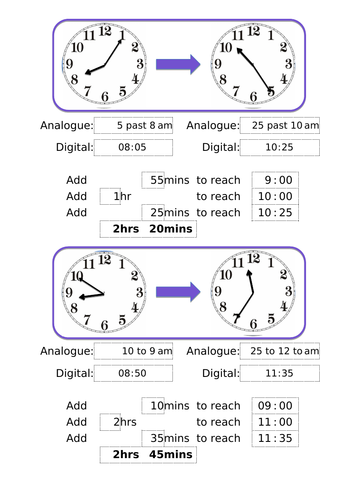








A set of challenging tasks for more able upper primary pupils and KS3.
These tasks assess the children’s ability to read analogue time, and to convert analogue to digital time. They are then scaffolded in the use of a method by which they can calculate time spans using digital time readings.
Eight tasks are arranged in increasing order of difficulty using 12 and 24 hour time.
The tasks are designed to provide a grounding from which pupils can go on to explore the effectiveness of various mental strategies to quickly and accurately calculate more complex time spans.
The worksheets can be filled in by hand or electronically on a PC/tablet.
The clock hands can be re-directed by clicking on them twice and pulling the arrow-tip around to tailor your own tasks.
Something went wrong, please try again later.
I like how this is different to normal 'time and reading the clock' worksheets. Instead of just asking students how to read the time, it also asks them to give the time between the two clocks in minutes and hours allowing students to think about how they can break down passages of time. This is an essential life style that seems to be getting lost in the digital age we now live in.
Report this resourceto let us know if it violates our terms and conditions.
Our customer service team will review your report and will be in touch.